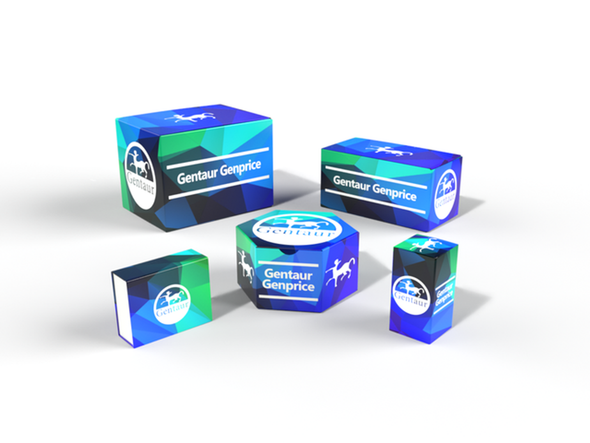Description
APG7 Antibody | 3617 | Gentaur UK, US & Europe Distribution
Host: Rabbit
Reactivity: Human, Mouse
Homology: Predicted species reactivity based on immunogen sequence: Rat: (100%) , Chicken: (88%)
Immunogen: APG7 antibody was raised against a 17 amino acid synthetic peptide from near the amino terminus of human APG7.
The immunogen is located within the first 50 amino acids of APG7.
Research Area: Apoptosis, Autophagy
Tested Application: E, WB, ICC, IF
Application: APG7 antibody can be used for the detection of APG7 by Western blot at 1 - 4 μg/mL. Antibody can also be used for immunocytochemistry starting at 10 μg/mL. For immunofluorescence start at 10 μg/mL.
Antibody validated: Western Blot in mouse samples; Immunocytochemistry in mouse samples and Immunofluorescence in mouse samples. All other applications and species not yet tested.
Specificiy: N/A
Positive Control 1: Cat. No. 1284 - L1210 Cell Lysate
Positive Control 2: Cat. No. 17-204 - L1210 Cell Slide
Positive Control 3: N/A
Positive Control 4: N/A
Positive Control 5: N/A
Positive Control 6: N/A
Molecular Weight: Predicted: 77 kDa
Observed: 77 kDa
Validation: N/A
Isoform: N/A
Purification: APG7 Antibody is affinity chromatography purified via peptide column.
Clonality: Polyclonal
Clone: N/A
Isotype: IgG
Conjugate: Unconjugated
Physical State: Liquid
Buffer: APG7 Antibody is supplied in PBS containing 0.02% sodium azide.
Concentration: 1 mg/mL
Storage Condition: APG7 antibody can be stored at 4˚C for three months and -20˚C, stable for up to one year. As with all antibodies care should be taken to avoid repeated freeze thaw cycles. Antibodies should not be exposed to prolonged high temperatures.
Alternate Name: APG7 Antibody: GSA7, APG7L, APG7-LIKE, Ubiquitin-like modifier-activating enzyme ATG7, ATG12-activating enzyme E1 ATG7, APG7-like
User Note: Optimal dilutions for each application to be determined by the researcher.
BACKGROUND: APG7 Antibody: Autophagy, the process of bulk degradation of cellular proteins through an autophagosomic-lysosomal pathway is important for normal growth control and may be defective in tumor cells. It is involved in the preservation of cellular nutrients under starvation conditions as well as the normal turnover of cytosolic components. This process is negatively regulated by TOR (Target of rapamycin) through phosphorylation of autophagy protein APG1. Another member of the autophagy family of proteins is APG7 which was identified in yeast as a ubiquitin-E1-like enzyme; this function is conserved in the mammalian homolog. In mammalian cells, APG7 is essential for autophagy conjugation systems, autophagosome formation, starvation-induced bulk degradation of proteins and organelles. It has been suggested that caspase-8 may alter APG7 levels and thus the APG7 program of autophagic cell death.










